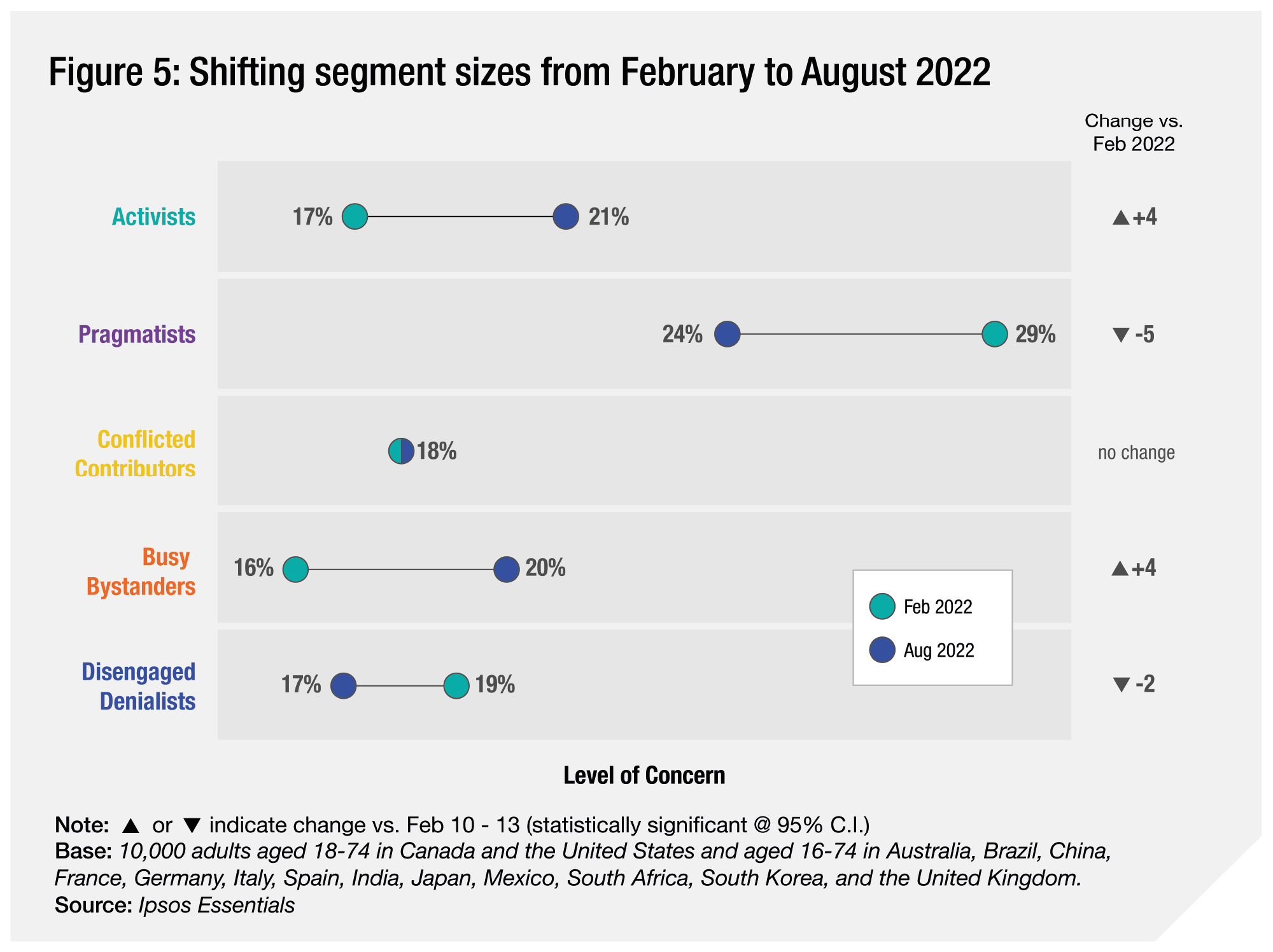Shifting dimensions
 This segmentation represents the ‘here & now’ within the current political and socio-economic context. And due to the intrinsic link between sustainability and what is going on in the wider world, it is likely that attitudes and behaviours linked to sustainability issues will evolve over time.
This segmentation represents the ‘here & now’ within the current political and socio-economic context. And due to the intrinsic link between sustainability and what is going on in the wider world, it is likely that attitudes and behaviours linked to sustainability issues will evolve over time.
For example, we only need to consider the impact of the pandemic, inflation, and war on people’s sustainability priorities – protecting ourselves, saving money, using less fuel, being more careful to avoid waste. Impending environment-related legislation (local/national/global) and Net Zero targets will also affect not only businesses but also the choices available to consumers and citizens.
Hence, monitoring the shifting concern and activity surrounding sustainability (and the environment specifically) and how this may impact the form and size of the segments over time is critical (as well as introducing new dimensions where necessary/relevant). Even between February and August 2022 we observed a change in the segment sizes with an increase in the Activists, predominantly driven by changes in the shifting focus of citizens in France, Mexico, Germany, South Korea and the UK.
Understanding the ‘why’ behind these local shifts is also key to engaging citizens and consumers. In these cases, it is likely that for Europe this has been driven by the extreme heat waves experienced over the preceding months with associated wildfires and record-breaking temperatures.
Due to the intrinsic link between sustainability and what is going on in the wider world, it is likely that attitudes and behaviours linked to sustainability issues will evolve over time.
Having this depth of understanding about the underlying characteristics, attitudes, behaviours, and expectations of citizens and consumers means that there is a greater chance of engaging them with more sustainable products, services, solutions, advice, and incentive. Using a ‘typing tool’ to recruit to these segments provides a sharper lens on how people may feel and act in response to change. This provides the opportunity to combine other research and insights with the current picture of how sustainability sits in the minds of different groups of consumers.

Table of content
- Five key takeaways
- The context
- The segmentation of sustainability
- Geo-diversity in environmental concern
- Shifting dimensions
- From understanding to activation
| Previous | Next |



